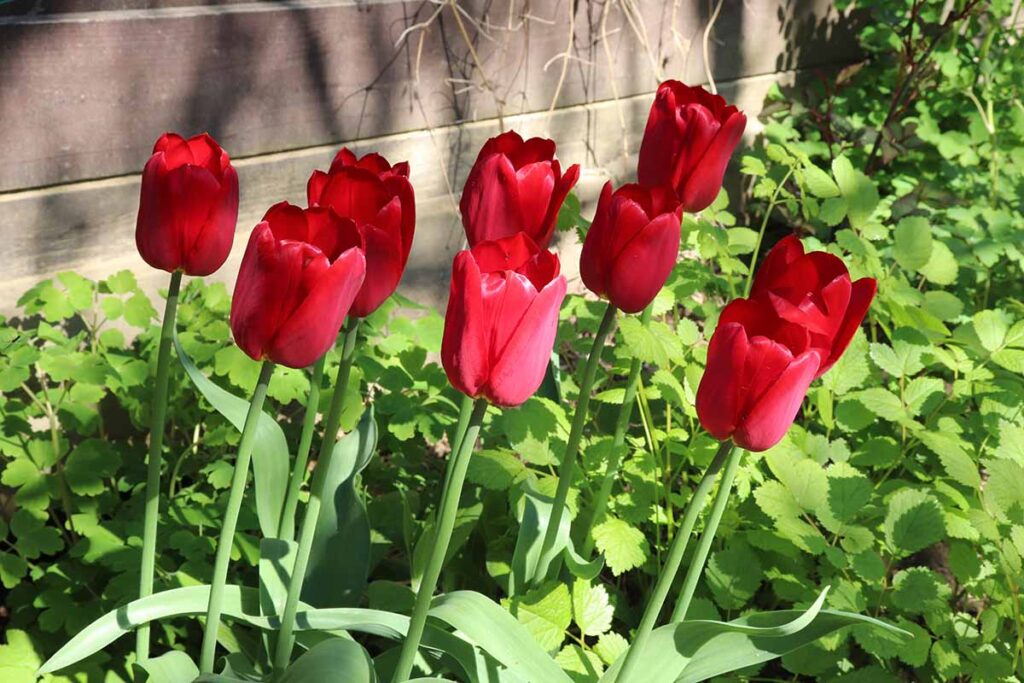
Bidding Farewell to Blooms: Nurturing Tulips After Their Showstopper Spectacle
Tulips, with their vibrant hues and elegant forms, are undisputed superstars of the spring garden. Their flamboyant blooms, a testament to the ephemeral beauty of nature, capture the hearts of flower enthusiasts everywhere. But what happens after the petals unfurl and the vibrant display begins to fade? While the temptation might be to discard spent tulip plants, proper post-bloom care is a crucial step for those who wish to witness these captivating flowers return year after year.
The Importance of Post-Bloom Care
Many gardeners mistakenly believe that a tulip’s job is done once it has flowered. However, neglecting post-bloom care can hinder a tulip’s ability to produce vibrant blooms in the following season. The period after flowering is when the tulip plant focuses on replenishing the energy reserves stored within its bulb. By providing proper care during this vital stage, you’re essentially investing in the future floral performance of your tulip patch.
Encouraging Renewal: A Step-by-Step Guide
Once the tulip’s flower has begun to wilt and lose its color, it’s time to take action. Here’s a step-by-step guide to nurturing your tulips after their springtime spectacle:
-
Deadheading and Foliage Management: Remove the spent flower head using sharp pruners, taking care to cut just above the first set of leaves. Resist the urge to cut the entire stem, as the remaining foliage is essential for photosynthesis and nutrient production. Allow the leaves to turn yellow and die back naturally.
-
Strategic Watering and Fertilization: Continue to water your tulips regularly, especially during dry periods. Aim to provide deep irrigation, soaking the soil thoroughly, but avoid waterlogging. Once a week or so after deadheading, provide your tulips with a light application of a balanced fertilizer formulated for bulbs. This final feeding provides a boost of nutrients for the bulb to store in preparation for the next flowering season.
-
Preparing for Dormancy or Winter Storage: As the leaves yellow and die back completely, you’ve reached the tulip’s dormancy period. In regions with harsh winters, you can carefully dig up the bulbs once the foliage has completely died back. Allow them to dry thoroughly in a cool, well-ventilated location before storing them in a paper bag or mesh basket for the winter.
Alternative Approaches: Container Considerations
Tulips grown in containers present a slightly different scenario. Due to the confined environment and limited access to nutrients, container-grown tulips often struggle to produce blooms for multiple seasons. If you’re short on space or prefer a disposable approach, you can simply discard the spent bulbs and plant fresh ones in the fall for the following spring. Alternatively, for container-grown tulips you’d like to try and revive, follow the same post-bloom care steps as outlined above. Replant the bulbs in a larger container with fresh potting mix in the fall, and provide them with winter protection if necessary.
The Reward of Patience: Witnessing the Tulips’ Return
By following these simple steps, you’ll be laying the groundwork for a vibrant spring display in the years to come. Witnessing your tulips emerge anew, their elegant forms bursting forth in a kaleidoscope of colors, is a reward for your patience and dedication. So, the next time you witness the last petals of your tulips gracefully fade, remember, it’s not the end of the story, but rather the quiet beginning of the next chapter in their floral dance.





